 March 3, 2022 John E. Ross, KD8IDJ, Editor
| ||||||
"We Will Have Hamvention," General Chairman Pledges In case you missed the earlier announcement, Dayton Hamvention® "The aisles were full of people, the vendors appeared pleased with the brisk business, and the Hamvention booth was bombarded with well-wishers and folks with one question on their mind -- 'Are you going to have Hamvention this year?'" Allnutt said it's been a pleasure to assure everyone that Hamvention 2022 is a go. Many Hamvention tickets were sold at the pre-show price and are also available on the Hamvention website. Hamvention, an ARRL-sanctioned event, will be held May 20 - 22, at the Greene County Fairgrounds and Expo Center in Xenia, Ohio. Allnutt noted that he and Michael Kalter, W8CI, were interviewed in a DX Engineering YouTube video on February 22 and unveiled the official logo for Hamvention 2022. This year's theme, "reunion,"
celebrates the return to a world of hams getting together after missing two Hamventions, and commemorates the history of Dayton Hamvention, which stretches back 70 years to 1952. "Ticket sales are very brisk," Kalter said. "The community is very excited about things, there have been improvements made at the Expo Center, and they're totally on our side working with us." He said both he and Allnutt were at Orlando Hamcation, which he called "very successful," and a good omen for Hamvention's success in 2022. "We don't consider it a competition [among shows]," Kalter said. "We're all working together to make amateur radio much better." "It's [going to be] be wonderful," Allnutt told DX Engineering's Tim Duffy, K3LR. Hamvention will also feature ARRL EXPO, a large assembly of ARRL-sponsored exhibits, activities, and representatives for ARRL programs and services. Several ARRL-sponsored presentations and forums will be given. Information will be posted to www.arrl.org/expo as it becomes available. Kalter also highly recommended attending Contest University (CTU) on May 19 at the Hope Hotel, which takes place on the Thursday before Hamvention, as an adjunct to the Hamvention experience. ARRL Seeks Exemption from Proposed US Forest Service Communication Facility Fees; Comment Period Open Until March 31 ARRL has filed comments with the US Forest Service (USFS) seeking an exemption for amateur radio facilities to a proposed new $1,400 annual administrative fee. The USFS proposal resulted from requirements in the Agriculture Improvement Act of 2018 (aka "the Farm Bill"), which directs the Forest Service to collect fees for issuing communications use authorizations based on the cost to the agency for processing the applications, maintenance, and other related activities. The proposed fee is a new and separate fee, not an increase to fees, such as rent, already being paid. If adopted, the existing fee(s) -- which generally have been around $130 - 140 annually for The comment filing window has been re-opened, and additional comments will be accepted through March 31. Any radio amateurs missing the first comment period or wishing to add to their earlier comments are encouraged to do so during this additional period. "Although the discussion put forward by the Forest Service in its proposal focuses on commercial uses, the proposal would sweep within its requirements amateur radio uses that are solely noncommercial," ARRL said in comments filed on February 22. "Radio amateurs establish and maintain facilities at certain locations for public service purposes with no remuneration or reimbursement. Unlike broadcasters and commercial wireless and fiber providers, radio amateurs are uniquely barred by the terms of their federal licenses from receiving compensation of any sort." "Non-commercial and uncompensated communication uses by radio amateurs within Forest Service areas long have served the public interest in many ways, among them by providing the means for otherwise unobtainable emergency communication capabilities in times of need," ARRL noted. "Amateurs perform this valuable public service without cost to taxpayers. The importance of these capabilities [has] been demonstrated repeatedly. The skills of amateur operators have served our country well with their carefully located equipment when enabling exchanges of possibly life-saving messages in difficult terrain during forest fires, extending communications assistance help during hurricanes, and providing communications capabilities during search-and-rescue missions in remote areas." ARRL stressed that equipment, maintenance, and other costs associated with amateur radio facilities on USFS lands "are borne solely by the volunteer radio amateurs themselves."
ARRL continued, "Commercial applicants usually request more extensive use of the lands administered by the Forest Service, and these requests necessarily result in more complex issues having to be considered and resolved." "It is foreseeable that many radio amateurs providing these services would have to opt to withdraw and cease their work," if not exempted from the proposed fees, ARRL said. "In many cases the most useful locations for needed coverage from their stations is uniquely on Forest Service lands. In short, the proposal to include volunteer uncompensated amateur service applicants with the commercial wireless service and broadcast applicants is grossly inequitable. There is a disparity in the amount of resources necessary to consider applications from radio amateurs as compared to that required by commercial applicants." "[O]ur best estimate is that there are fewer than 100 covered amateur locations, but those likely are unique and essential to covering forested areas in times of need, such as forest fires or lost hikers," ARRL said. "These dissimilarities in complexity and scope should be recognized in this fees proposal and amateur radio applications exempted." ARRL Podcasts Schedule
The On the Air and Eclectic Tech podcasts are sponsored by Icom. Both podcasts are available on iTunes (iOS) and Stitcher (Android) as well as on Blubrry -- On the Air | Eclectic Tech. HamXposition to Host ARRL New England and Hudson Division Conventions In what may be a "first," the Northeast HamXposition will host both the ARRL New England and Hudson Division conventions this year. HamXposition takes place August 26 - 28, 2022, in Marlborough, Massachusetts, and tickets will become available May 1. Formerly known as "Boxboro," the New England Division Convention features a Saturday morning keynote address, Friday and Saturday "It certainly has been a while since the Hudson Division has had a convention," said ARRL Hudson Division Director Ria Jairam, N2RJ. "By joining forces with the New England Division for a joint convention, we can bring back a sense of nostalgia and community." New ARRL New England Division Director Fred Kemmerer, AB1OC, said, "We are excited to have the Hudson Division join with New England to support and grow the 2022 HamXposition event." Kemmerer called it "a great opportunity to expand HamXposition participation and programs, and [to] work to provide support for the scholarships to young hams in both Divisions." ARRL First Vice President Mike Raisbeck, K1TWF, predicted larger attendance than has been seen in many years.
In February, FEMARA, the organization that runs HamXposition, voted to officially approve the unique arrangement. The combined events have received ARRL Division convention sanctioning, approved by Directors Kemmerer and Jairam. Both are members of the HamXposition Convention Committee, along with New England Division Vice Director Phil Temples, K9HI, who serves as the Program Chair. Vice President Raisbeck is the FEMARA President and the convention's Vice Chair. Raisbeck said HamXposition will return to the venue selected for last year's event -- the Best Western Royal Plaza Hotel & Trade Center in Marlborough. "The new facility has everything we had hoped for. It is newer and larger than our old venue, and is more centrally located with restaurants, shops, and other hotels only minutes away," he said. "We have long-term commitments from the hotel, and we plan to be at this location for the foreseeable future." Visit the convention website for more information, such as how to volunteer, serve as a speaker, and take advantage of the convention discount when booking hotel reservations. Volunteer Monitor Program Cautions against Operating Beyond License Privileges Many of the Advisory Notices sent out each month by the ARRL Volunteer Monitor Program go to stations heard operating outside the operator's license privileges. While some may be doing so deliberately, it seems clear that many of these reports reflect a lack of clarity regarding the Part 97 -- Amateur Radio Service rules. Typical cases often involve operators holding Technician- or General-class amateur licenses being heard on a frequency or band not permitted by their license privileges. Most recent incidents have frequently entailed FT8 digital mode operation by Technician licensees Technicians (and Novices) may operate CW between 21.025 and 21.200 MHz on 15 meters, from 7.025 and 7.125 MHz on 40 meters, and from 3.525 to 3.600 MHz on 80 meters, but they do not have any digital (data) mode privileges on these bands. ARRL Volunteer Monitor Program Administrator Riley Hollingsworth, K4ZDH, said licensees who need a refresher course regarding their operating privileges may refer to Section 97.301 of the rules. ARRL also has a convenient chart on its website that details privileges available to all license classes, from Novice to Amateur Extra. As monthly Volunteer Monitor reports indicate, some General-class operators have lost their way on some bands too, and Advisory Notices have gone out to those operating outside of the General-class phone subbands. For example, on 20 meters, Generals may operate phone from 14.225 to 14.350 MHz, but occasionally, General-class operators are heard outside of that subband. On 40 meters, the phone and image subband open to General licensees is 7.175 to 7.300 MHz. Of course, Technician- and General-class licensees may operate CW on any subband on which they have operating privileges, although operation within the CW subbands is preferred by band plan. On 10 meters, Technicians have RTTY and data privileges -- including FT8 -- from 28.000 to 28.300 MHz, and SSB phone privileges from 28.300 to 28.500 MHz, and may operate on CW over the entire 28.0000 - 28.500 MHz segment. Technicians may enjoy all operating privileges at 50 MHz and above. The ARRL Volunteer Monitor program is a formal agreement between the FCC and ARRL. Volunteers trained and vetted by ARRL monitor the airwaves and report evidence that may be used to correct errant operation or to recognize exemplary on-air operation. Ukraine Maintains Ham Radio Silence in State of Emergency Radio amateurs in Ukraine appear to be diligently maintaining radio silence as the state of emergency declared there just prior to the Russian military invasion remains in effect. A February 24 decree from President Volodymyr Zelensky included "a ban on the operation amateur radio transmitters for personal and collective use." The "The LRU informed international amateur radio organizations about Russia's military invasion of Ukraine," said the message from UARL Vice President Anatoly Kirilenko, UT3UY. "To date, there have been many reports from radio amateurs around the world in support of Ukraine." The International Amateur Radio Union ( IARU) has adopted a neutral stance. "IARU is an apolitical organization focused on promoting and defending amateur radio and the amateur radio services," the IARU said. "The amateur radio service is about self-instruction in communications and friendship between people." IARU Region 1 has said it continues to monitor the development and expect all radio amateurs "to follow their national laws and regulations." IARU Region 1 also re-posted part of an advisory from the Deutscher Amateur Radio Club HF Committee on February 27. "Any radio amateur currently transmitting from Ukraine is risking his or her life. If you hear a Ukrainian station, do not broadcast its call sign, location, or frequencyâ--âwhether on the band, in a cluster, or on social media. You may be putting lives at risk." The DARC's overarching advice: "In the current situation, the best we can do is listen." Ukraine's assigned amateur radio call sign prefixes include EMA - EOZ and the more commonplace URA - UZZ. Some stations with Ukrainian call signs may still be active, since an exception to the amateur radio ban was made for stations in the Donbas region of eastern Ukraine (eastern Donetsk and Luhansk oblasts), which have special legal status owing to Russia's occupation since 2014. -- Thanks to The Daily DX for some information Amateur Radio in the News ARRL Public Information Officers, Coordinators, and many other member-volunteers help keep amateur radio and ARRL in the news.
Registration is Open for USA ARDF Championships Registration is now open for the 21st USA Championships of Amateur Radio Direction Finding (ARDF), set for April 7 - 10, 2022. The competition will take place in Prince William Forest Park near Quantico, Virginia. "Radio orienteers from all over the country, plus visitors from abroad, are invited to attend," said ARRL ARDF Co-coordinator Gerald Boyd, WB8WFK. "The competitive courses are open to anyone of any age, with or without an amateur radio license. The results will help select who will be invited to fill positions on ARDF Team USA, which will Wednesday, April 6, will be a practice day for equipment testing and a competitor briefing. From Thursday through Sunday, competitors will have the opportunity to compete in the sprint, foxoring, and classic courses on 2 meters and 80 meters. Awards for first through third places will be presented at ceremonies following the events. Members of the Backwoods Orienteering Klub (BOK) will organize the 2022 USA Championships. All are experienced radio orienteers who organized the successful 2013 and 2019 national championships. The event director is Joseph Huberman, K5JGH, and the registrar is Ruth Bromer, WB4QZG. The International Amateur Radio Union (IARU) sets ARDF championship rules. For scoring and awards, participants are divided into 12 age/gender categories. In the classic ARDF events, competitors start together in small groups made up of different categories. As they seek the "fox" transmitters, they navigate through the forest from the starting corridor to the finish line, a distance ranging between 4 and 12 kilometers (about 2.5 miles and 7.4 miles). They plot their direction-finding bearings on orienteering maps that show terrain features, elevation contours, and vegetation type.
"The USA ARDF Championships are open to anyone who can safely navigate the woods by themselves. A ham radio license is not required," Boyd emphasized. "In ARDF, personal navigation skills are important because each participant competes as an individual -- any teamwork or GPS map use is forbidden. Competitors bring their own direction-finding gear to the events, although extra gear is often available for loan from other attendees. Competitors may not transmit on the course, except in emergencies." Information bulletin #2 contains the complete schedule, technical details, fees, rule variations, and more. An email reflector is available for Q&A with the organizers, as well as for coordinating transportation and arranging equipment loans. Announcements, rules, organizer instructions, and more are available at the ARRL ARDF website. Basic information on international-style transmitter hunting is on the Homing In website, which includes equipment ideas for 2 meters and 80 meters, plus photos and stories from previous championships. -- Thanks to Joe Moell, K0OV Chess-Playing Ham Radio Satellite to Launch in Fall Spain's IARU member-society URE reports that intensive work is under way to make URESAT-1 available before the end of the year. If all goes according to plan, URESAT-1 will launch aboard a SpaceX Falcon-9 rocket from Cape Canaveral in October 2022. URE says URESAT-1 is based on the architecture used in the AMSAT- Several radio amateurs are working on the project, and if it is completed by the time the satellite is due to be delivered, it will be included. URE has created a blog in Spanish, where the status of the project is being reported. Announcements
ARISS Seeks Hosts for Ham Radio Contacts with Space Station Crew Members Amateur Radio on the International Space Station (ARISS) is accepting applications until March 31 from US schools, museums, science centers, and community youth organizations (working individually or together) interested in hosting contacts with International Space Station (ISS) crew members. Contacts will be scheduled between January 1 and June 30, 2023. Proposal information and additional details are available on the ARISS-USA website. ARISS is looking for organizations capable of attracting large numbers ARISS contacts afford participants the opportunity to learn firsthand from astronauts what it's like to live and work in space. The program's goal is to inspire students to pursue interests and careers in science, technology, engineering, and mathematics. Students can learn about satellite communications, wireless technology, scientific research on the ISS, radio science, and related topics. They'll also learn how to use amateur radio to talk directly to an ISS crew member. Contacts are approximately 10 minutes long. An ARISS introductory webinar will be held on March 4, at 0100 UTC (the evening of March 3 in North American time zones). Registration is required. ARISS is a cooperative venture of international amateur radio societies and space agencies that support the ISS. ARRL The National Association for Amateur Radio® is a sponsor. Direct questions to ARISS-USA. Read an expanded version. The K7RA Solar Update Tad Cook, K7RA, Seattle, reports: Solar activity was weak over the February 24 - March 2 reporting week with average daily sunspot numbers weakening from 54.3 to 44, but average daily solar flux rising slightly from 95.4 to 98.3. Geomagnetic numbers were moderate. Average daily planetary A Predicted solar flux is 115 on March 3 - 4; 110 on March 5 - 6; 105 on March 7; 100 on March 8 - 10; 99 on March 11 - 13; 98 on March 14; 95 on March 15 - 16; 96, 97, 98, and 99 on March 17 - 20; 100 on March 21 - 22; 101 and 100 on March 23 - 24; 102 on March 25 - 26; 99 and 102 on March 27 - 28; 105 on March 29 - 31; 102 on April 1 - 2; 101 on April 3 - 4, and 100 on April 5 - 6. Predicted planetary A index is 5, 8, 12, and 8 on March 3 - 6; 5 on March 7 - 10; 15, 12, 8, 5, and 8 on March 11 - 15; 5 on March 16 - 17; 10 on March 18; 15 on March 19 - 21; 7 on March 22 - 24; 5 and 10 on March 25 - 26; 12 on March 27 - 28; 8 on March 29 - 30; 12 on March 31; 15 on April 1 - 2, and 5 on April 3 - 6. Sunspot numbers for February 24 - March 2 were 23, 22, 22, 48, 65, 62, and 66, with a mean of 44. The 10.7-centimeter flux was 92.3, 96.2, 96.5, 96.9, 99, 99.3, and 109.5, with a mean of 98.5. Estimated planetary A indices were 7, 8, 3, 13, 8, 8, and 4, with a mean of 7.3. Middle latitude A index was 6, 7, 1, 11, 5, 6, and 3, with a mean of 5.6. A comprehensive K7RA Solar Update is posted Fridays on the ARRL website. For more information concerning radio propagation, visit the ARRL Technical Information Service, read "What the Numbers Mean...," and check out the Propagation Page of Carl Luetzelschwab, K9LA. A propagation bulletin archive is available. For customizable propagation charts, visit the VOACAP Online for Ham Radio website. Share your reports and observations. Just Ahead in Radiosport
Upcoming Section, State, and Division Conventions
Search the ARRL Hamfest and Convention Database to find events in your area. ARRL -- Your One-Stop Resource for
Subscribe to...
Free of charge to ARRL members...
| ||||||
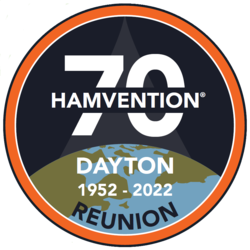 2022 is on, Hamvention General Chairman Rick Allnutt, WS8G, said this week. He said many Hamvention volunteers attended the recent Orlando HamCation in Florida and were encouraged to see so many friends at the show.
2022 is on, Hamvention General Chairman Rick Allnutt, WS8G, said this week. He said many Hamvention volunteers attended the recent Orlando HamCation in Florida and were encouraged to see so many friends at the show..JPG)
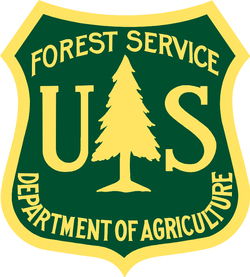 amateur uses -- would have to be paid in addition to the new proposed annual administrative fee of $1400.
amateur uses -- would have to be paid in addition to the new proposed annual administrative fee of $1400.
.jpg) The latest episode of the On the Air podcast (Episode 26) features a conversation with two YouTube veterans -- Dave Casler, KE0OG, and Steve Goodgame, K5ATA. YouTube is increasingly becoming the go-to resource for information on a variety of amateur radio topics.
The latest episode of the On the Air podcast (Episode 26) features a conversation with two YouTube veterans -- Dave Casler, KE0OG, and Steve Goodgame, K5ATA. YouTube is increasingly becoming the go-to resource for information on a variety of amateur radio topics..jpg) The latest edition of the Eclectic Tech podcast (Episode 54) features a chat with Barry Feierman, K3EUI, concerning the use of the VARA digital mode with handheld FM transceivers. Also, the end of Google's "Project Loon."
The latest edition of the Eclectic Tech podcast (Episode 54) features a chat with Barry Feierman, K3EUI, concerning the use of the VARA digital mode with handheld FM transceivers. Also, the end of Google's "Project Loon.".JPG) evening banquets with guest speakers, a large outdoor flea market, and ample indoor vendor space. Proceeds from the convention will benefit scholarships for both New England and Hudson Division students. Volunteers and speakers will be drawn from both Divisions. Other details will be worked out as things progress.
evening banquets with guest speakers, a large outdoor flea market, and ample indoor vendor space. Proceeds from the convention will benefit scholarships for both New England and Hudson Division students. Volunteers and speakers will be drawn from both Divisions. Other details will be worked out as things progress.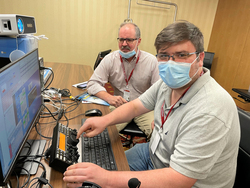
-2.JPG) on 20 and 40 meters. Technician licensees do not have any operating privileges on 20 meters, let alone digital privileges, and FT8 is a digital protocol.
on 20 and 40 meters. Technician licensees do not have any operating privileges on 20 meters, let alone digital privileges, and FT8 is a digital protocol..png) Ukraine Amateur Radio League (
Ukraine Amateur Radio League (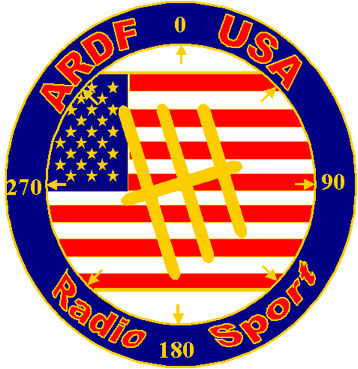 travel to Serbia for the 2022 ARDF World Championships in September.
travel to Serbia for the 2022 ARDF World Championships in September.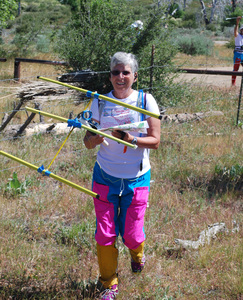
.jpg) EA GENESIS, EASAT-2, and HADES missions but with significant improvements, such as a 32-bit computer, and enhancements in the deployment mechanism, antennas, and batteries. URESAT-1 will carry a VHF/UHF FM ham radio repeater as well as digipeating capability of AX.25 and APRS. URE says the payload is not yet defined but could be the same slow-scan television (SSTV) camera that flies in HADES, a thruster, or some kind of experiment. One confirmed project is a chess game that will allow radio amateurs to play against the onboard computer via FSK telemetry.
EA GENESIS, EASAT-2, and HADES missions but with significant improvements, such as a 32-bit computer, and enhancements in the deployment mechanism, antennas, and batteries. URESAT-1 will carry a VHF/UHF FM ham radio repeater as well as digipeating capability of AX.25 and APRS. URE says the payload is not yet defined but could be the same slow-scan television (SSTV) camera that flies in HADES, a thruster, or some kind of experiment. One confirmed project is a chess game that will allow radio amateurs to play against the onboard computer via FSK telemetry..JPG) SEA-PAC
SEA-PAC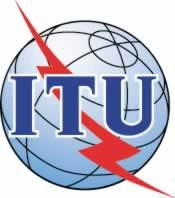 The International Telecommunication Union (ITU) has released the
The International Telecommunication Union (ITU) has released the 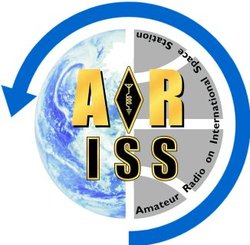 of participants and integrating the contact into a well-developed education plan.
of participants and integrating the contact into a well-developed education plan.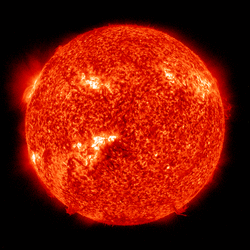 index declined from 9.6 to 7.3, and the middle latitude index from 7.3 to 5.6.
index declined from 9.6 to 7.3, and the middle latitude index from 7.3 to 5.6.







